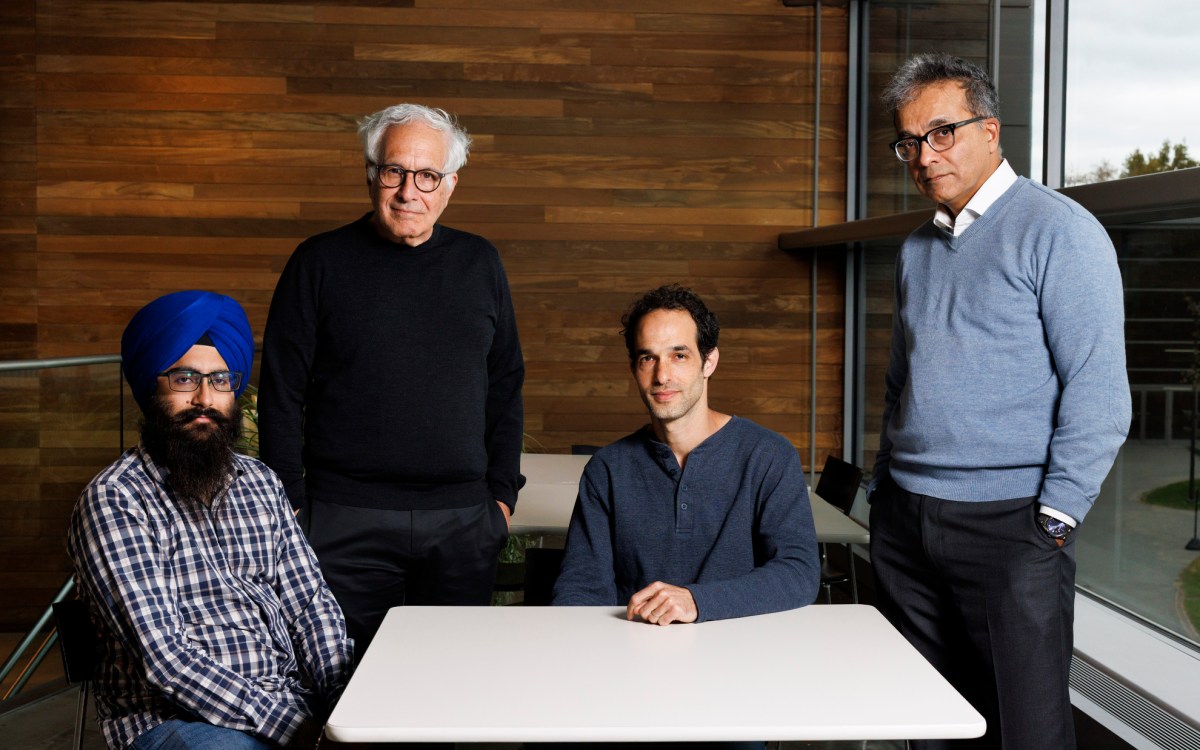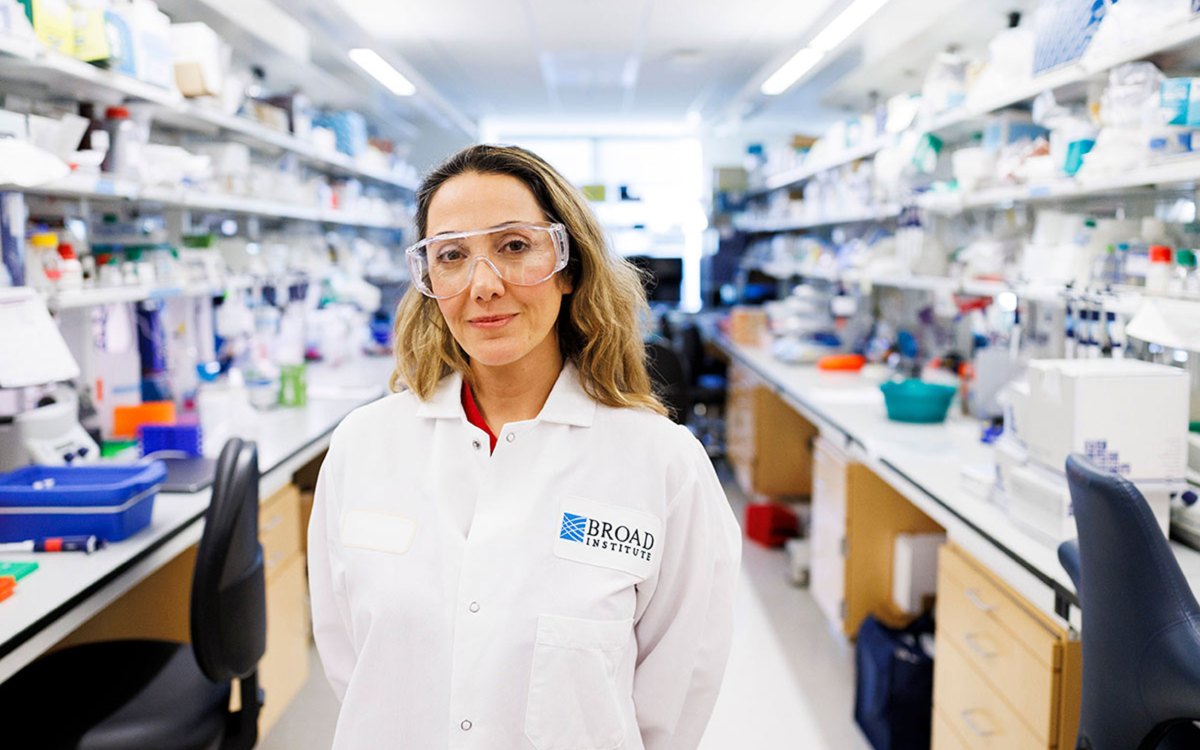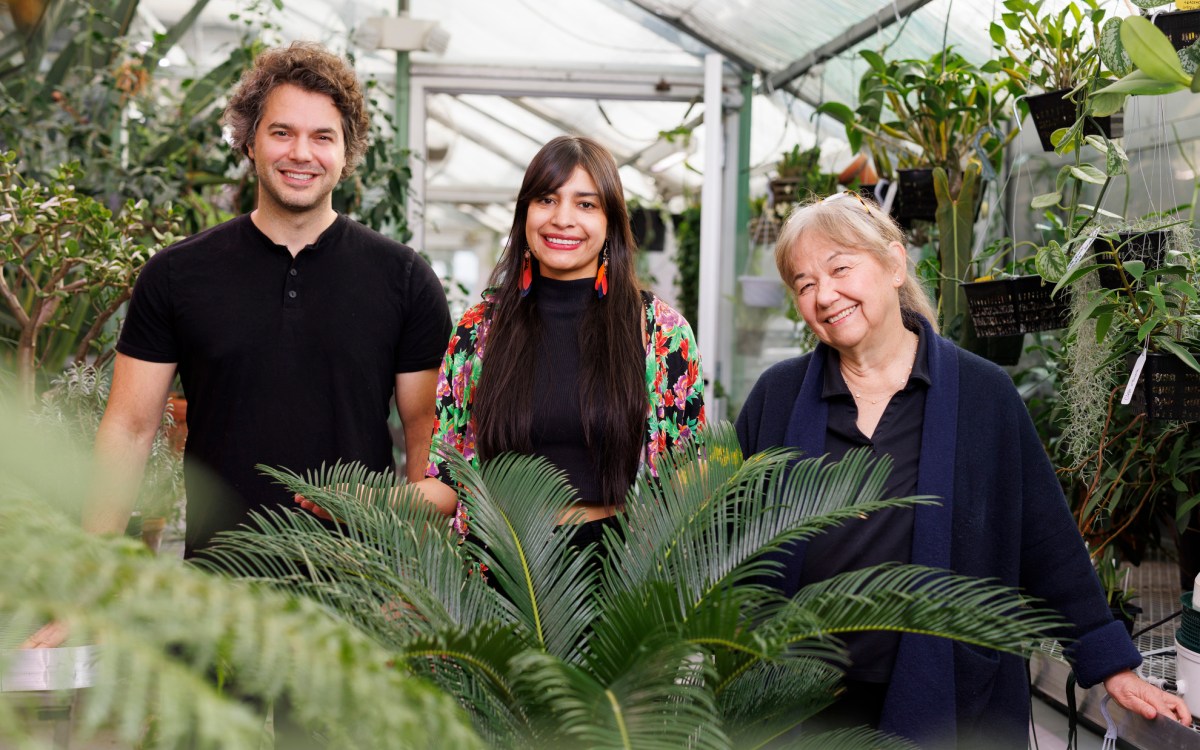Science & Tech
-

Want to speed brain research? It’s all in how you look at it.
New AI-enhanced scanning method promises to boost quest for high-resolution mapping
-

-

‘It just feels good when you solve the hard problems’
Why do students volunteer to take this notoriously difficult math exam? For the fun of it.
-

Stopping the next pandemic
Disease surveillance network faced ‘existential cliff’ despite proven success. Then came the $100 million.
-

Rethinking — and reframing — superintelligence
Microsoft researcher says separating AI from people makes systems dangerous and unproductive
-

First, male gets heated up, then female, and then, you know
Study shows infrared radiation from plants serves as invitation to pollinating insects
-
Warming may not spark tree growth
A bright spot in the gloomy global warming picture has been scientists’ predictions that at least some carbon dioxide will be removed from the atmosphere by a burst of growth from tropical forests. New research from the Arnold Arboretum, however, questions that prediction, finding that trees in two forests on opposite sides of the world have been growing dramatically slower, not faster, as temperatures have risen over the past 20 years.
-
Bradford Cannon
Bradford Cannon, a caring, talented, imaginative plastic surgeon at the Massachusetts General Hospital (MGH) was an acknowledged surgical pioneer for much of the twentieth century. He was born in Cambridge, Massachusetts, in 1907, to Walter Bradford Cannon born in Prairie du Chien, Wisconsin, and Cornelia James Cannon of Cambridge, MA. A year later his father became the Higginson Professor of Physiology at HMS. Brad Cannon graduated from Harvard College in 1929 and Harvard Medical School in 1933.
-
Prof. Lene Hau: Light matters
In 2007, Professor Hau expanded upon her ’05 light-stopping breakthrough by transforming light into matter, and then back again.
-
Undergrads to compete at Programming Contest
A group of Harvard undergraduates will travel to Tokyo to compete in the Association for Computing Machinery’s 31st annual International Collegiate Programming Contest (ACM-ICPC) on March 12-16. More than 6,000 teams, representing 1,756 universities from around the globe, participated in the regional competitions last fall. The top 88 teams earned coveted spots on the 2007 ACM-ICPC World Finals roster. The Harvard team is one of only 20 U.S. teams scheduled to compete in the World Finals.
-
Medieval Islamic architecture presages 20th century mathematics
Intricate decorative tilework found in medieval architecture across the Islamic world appears to exhibit advanced decagonal quasicrystal geometry – a concept discovered by Western mathematicians and physicists only in the 1970s and 1980s. If so, medieval Islamic application of this geometry would predate Western mastery by at least half a millennium.
-
Jackson raps abundance of ‘experts’
In 1973, Shirley Ann Jackson became the first black woman to receive a Ph.D. in physics from the Massachusetts Institute of Technology. Decades – and 38 honorary degrees – later, Jackson is the president of Rensselaer Polytechnic Institute in upstate New York. Her resume includes time as a university researcher (in theoretical elementary particle physics); a corporate scientist (at AT&T Bell Laboratories); and a government regulator (as chairwoman of the U.S. Nuclear Regulatory Commission from 1995 to 1999).
-
Symposium: ‘Will brain imaging be lie detector test of the future?’
For almost a century, one of the staples of crime stories has been the wires, cuffs, and jiggling recording needle of the polygraph machine. In its time, the “lie detector” was hailed as a way to measure the telltale physiological signs of deception, including hard breathing, high blood pressure, and excess perspiration. But in truth, the polygraph was never very accurate, hitting the mark only about 85 percent of the time – and meanwhile creating a lot of “false positives.” As many as 25 percent of people telling the truth during a polygraph exam come out looking like liars.
-
World’s largest oil firm chief touts research to make fossil fuels ‘cleaner’
The head of the world’s largest oil company said that renewable sources can’t meet the world’s growing energy needs so research dollars should be aimed at both developing renewable sources and at making fossil fuels cleaner.
-
Arctic hit by global warming first
Scientists from the eight nations bordering the Arctic recently enlisted representatives of the region’s native peoples to help assess climate change there. What they found put a human face on a debate often involving distant projections and abstract numbers. Less snow, less sea ice, freezing rain in winter, and the appearance of mosquitoes and robins, creatures so foreign the native residents have no word for them.
-
Light and matter united
Lene Hau has already shaken scientists’ beliefs about the nature of things. Albert Einstein and just about every other physicist insisted that light travels 186,000 miles a second in free space, and that it can’t be speeded-up or slowed down. But in 1998, Hau, for the first time in history, slowed light to 38 miles an hour, about the speed of rush-hour traffic.
-
New York artist expresses long passion
They are odds and ends of lives long past, lived in the cold and ice of the world’s polar regions. They are bits and pieces that give a feeling as…
-
‘Usable Knowledge’ Web site delivers research to educators
The Harvard Graduate School of Education on Dec. 6, 2006, launched a new Web site aimed at connecting the research of its faculty with educators in the field. The Usable…
-
Negative vibes from space
Astronomers have discovered the first negatively charged molecule in space, identifying it from radio signals that were a mystery until now. While about 130 neutral and 14 positively charged molecules…
-
Three-dimensional, miniature endoscope opens new diagnostic possibilities
Massachusetts General Hospital (MGH) researchers have developed a new type of miniature endoscope that produces three-dimensional, high-definition images, which may greatly expand the application of minimally invasive diagnostic and therapeutic…
-
Astronomers nab culprit in galactic hit-and-run
The Andromeda galaxy, the closest large spiral to the Milky Way, appears calm and tranquil as it wheels through space. But appearances can be deceiving. Astronomers have new evidence that…
-
DEAS welcomes Harvard astronaut back to Earth
International Space Station designers thought of everything concerning astronaut comfort while sleeping. There are sleeping bags, straps to hold astronauts against the wall, and, according to NASA astronaut Stephanie Wilson, there’s even a strap to hold their heads to the pillow against the weightlessness of space. Wilson, who graduated from Harvard in 1988, returned to campus on Sept. 14 to share her space experiences in an hour-long talk that mixed the technical accomplishments of her space shuttle flight and colorful details of life in space.
-
Sweeping for Thompson Island Hoppers
Education meets hands-on science as roughly 100 Harvard undergraduates fan out from beach to beach collecting insects for a new database of Harbor Island insect life.
-
Visualization Lab provides data in three dimensions
On the second floor of the Peabody Museum, in a darkened room painted flat black, Harvard geologist John Shaw slips on a pair of futuristic goggles as he sits before a 23-foot-wide wrap-around screen.
-
Strange new planet baffles astronomers
Using a network of small automated telescopes known as HAT, Smithsonian astronomers have discovered a planet unlike any other known world. This new planet, designated HAT-P-1, orbits one member of…
-
Measuring one of the universe’s building blocks
Only a few people think deeply about electrons. One is Gerald Gabrielse, Leverett Professor of Physics at Harvard University. In the past 20 years, he has discovered new things about them, things that even Albert Einstein never knew. And he’s trained a half-dozen young Ph.D.s in the business of how subatomic particles make the universe what it is.
-
Deep-sea sediments could safely store man-made carbon dioxide
An innovative solution for the man-made carbon dioxide fouling our skies could rest far beneath the surface of the ocean, say scientists at Harvard University. They’ve found that deep-sea sediments could provide a virtually unlimited and permanent reservoir for this gas that has been a primary driver of global climate change in recent decades, and estimate that seafloor sediments within U.S. territory are vast enough to store the nation’s carbon dioxide emissions for thousands of years to come.
-
Tilting at ice ages
Here’s a story to cool you off on a hot summer day. One of the major mysteries of ice ages may have been solved by a Harvard climatologist.
-
Cosmic blast announces a future supernova
It’s one thing to theorize about an exploding star the size of our sun, it’s another to look up in the sky and watch one getting ready to blow. Astronomers…
-
Jupiter’s ‘big brother’ has moon-forming dust disk
Earth’s moon was created by an early collision with another large planetary body. It was a “chip off the old block.” Mars captured its asteroidal moons as they passed by.…
-
Under-diagnosed rage disorder more prevalent than previously thought
A seldom-studied mental illness called Intermittent Explosive Disorder, characterized by recurrent episodes of angry and potentially violent outbursts — seen in cases of road rage or spousal abuse — has…
-
Tamed 11,400 years ago, figs likely first domesticated crop
Archaeobotanists have found evidence that the dawn of agriculture may have come with the domestication of fig trees in the Near East some 11,400 years ago, roughly 1,000 years before…
-
‘Virginity pledges’ by adolescents may bias their reports of premarital sex
Adolescents who sign a “virginity pledge” and then go on to have premarital sex are likely to disavow having signed such a pledge, according to an analysis of survey data…
-
Obesity levels in U.S. states are grossly underestimated
The prevalence of obesity in the U.S. states has been greatly underestimated. Researchers at the Harvard School of Public Health analyzed data from health surveys, which are used to estimate…
-
Discovery of calcium channel protein illuminates T cell signaling
A rare genetic defect in a family has helped researchers identify a key signaling component in T cells. The newly identified protein, Orai1, may be a piece of a long-…
-
Solitons may be the next wave in electronic circuits
Harvard scientists have solved the puzzle of how to generate a special form of wave in small electronic devices, allowing the electrical equivalent of the pulses of light that carry…



